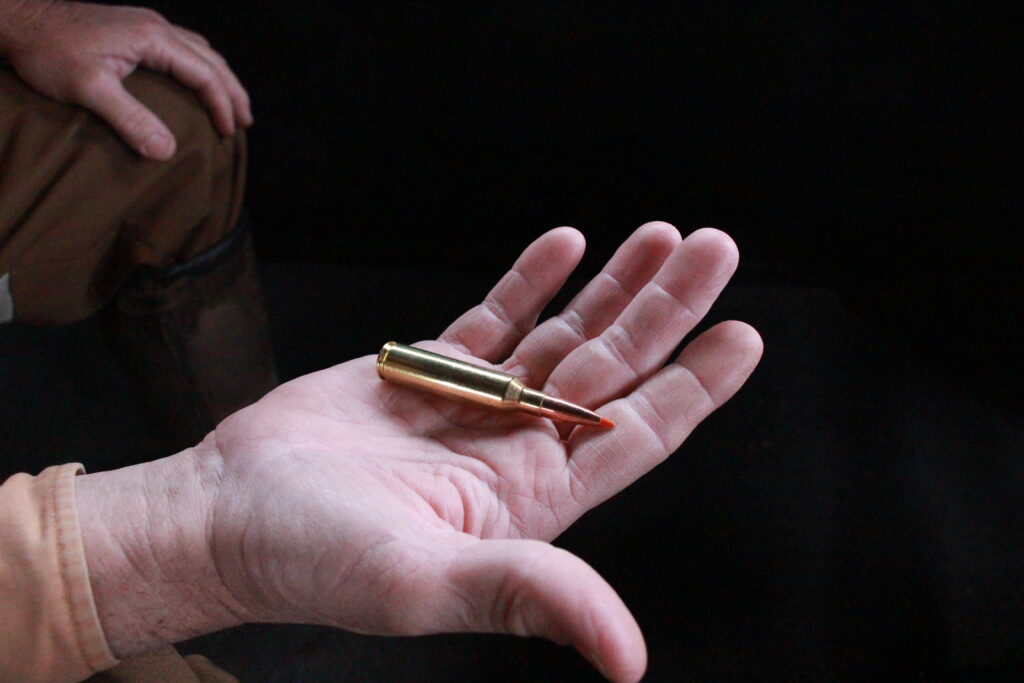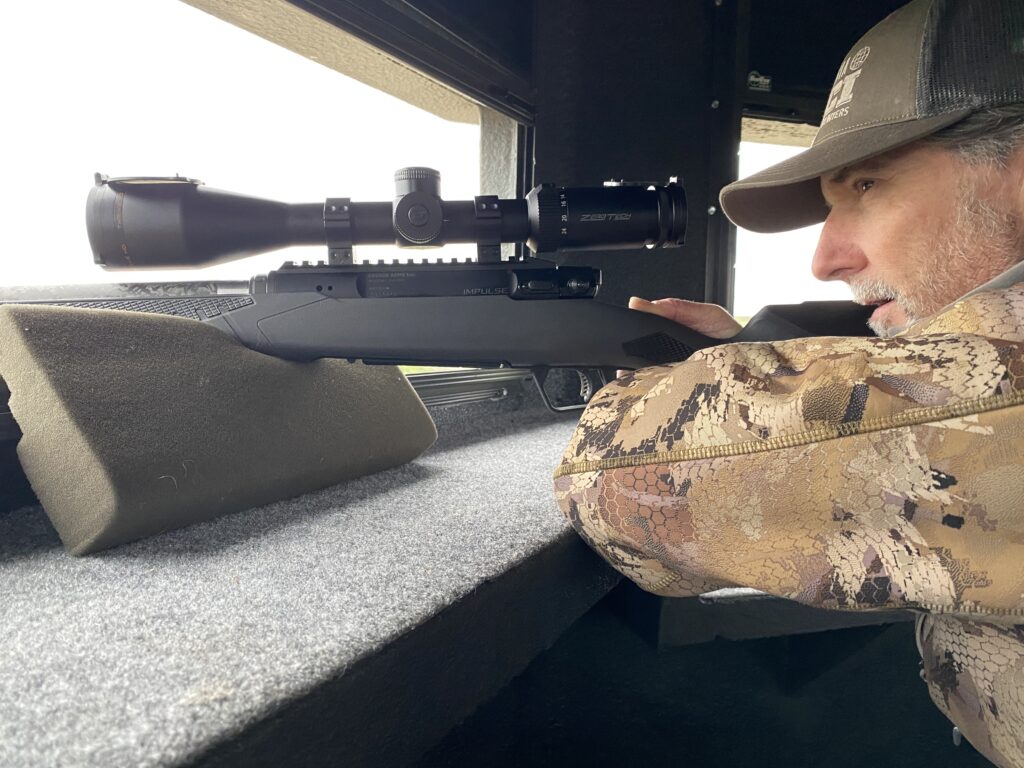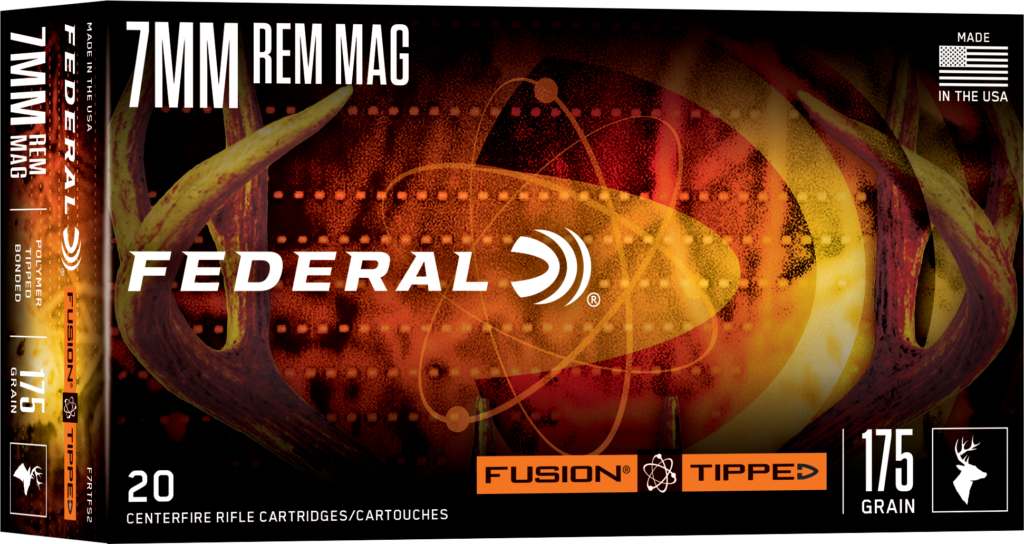Flying Faster, Hitting Harder
Simple Polymer Top Increases Range of Fusion Tipped Bullets
By John Geiger, Managing Editor
Deer hunters around the world are familiar with Fusion cartridges from Federal Premium.
The soft-nose, spire point bullets were release nearly 25 years ago. They quickly became known as a tough bullet that retained weight, especially at close range when other bullets would fragment. They were different because the lead core and copper jacket were bonded or fused via electro-chemical plating.
Until then, the hunting bullet were cup-and-core. A machine simply pressed a cupped metal jacket over a lead core. This process worked well for decades, and still does. Remington still sells a lot of cup-and-core Core-Lokt and Federal has their Power-Shok line.
But in the 1980s, innovators like Jack Carter and Bill Steiger came along and started chemically bonding jackets to the core. Carter, who gave us Trophy Bonded Bear Claw, and Steiger, who developed the Bitterroot Bonded Core, dramatically increased the effectiveness of hunting bullets. Their bullets had better penetration and more consistent mushrooming because the core and jacket were attached and didn’t separate as much.

In 2004, bullet-makers at Speer in Lewiston, Idaho, a sister company to Federal Premium, took the next step and began fusing the core and jacket electro-chemically on a molecular level via copper plating. This process made the bullets tougher as well as more concentric, which resulted in increased accuracy.
To get an idea of the copper-plating process, in the manufacturing process, you could hold a copper cup and a lead core in your hand before they are joined. But with Fusion, there is no cup to hold.
“It’s quite a bit different from the way any other bullet is made,” said Jake Burns, Federal’s centerfire rifle ammo engineering manager. “The two processes are similar in the sense that they are both bonded bullets, but the way they are manufactured is very different.”
If you go to Federal’s Anoka, Minnesota factory, you’ll see that they start with a lead core, which looks like a pill. They dunk the core into a tank of copper, and through chemicals and electricity in a common process of copper plating, the copper adheres to the lead, as if one. The bullet is then hammered into the Fusion bullet shape.

The Fusion bullet is still bonded in that way because it works.
But that was then, 25 years ago. A lot has changed in our hunting world. Now, with improved actions, triggers, barrels, propellants and optics, coupled with practice and training, hunters can shoot farther and still be highly accurate. Understandably, they want bullets that allow them to take advantage of these improvements.
Federal Premium already has its well-known and more expensive Terminal Ascent line, and many of those bullets have a very high ballistic coefficient. Terminal Ascent isn’t going anywhere. But engineers found that if they made just a few changes to the proven Fusion bullet, they could increase the bullet’s aerodynamics, flatten its trajectory and increase energy down range.
This year, they added a polymer tip and found it increased important properties that a modern hunter wants in a bullet. Fusion Tipped was introduced at the 2024 SHOT Show in Las Vegas.

“The streamlined design of the polymer tip itself reduces drag and improves the ballistic coefficient of the bullet,” said Burns. “Hunters get flatter trajectories, increased accuracy and more retained energy over longer distances.”
This dovetails into the modern need for consistent accuracy and reliable performance at extended ranges for hunters and precision shooters.
“These properties are especially valuable for long-range shooting, where maintaining stability and accuracy over varying environmental conditions is essential,” said the engineer.
In addition to the new tip, the bullet itself also got a bit of a makeover. Burns and his team made the Fusion Tipped bullet more streamlined. The bullet has a new sleeker profile. It is more aerodynamic, which increases speed and decreases wind drift.
The new bullets could be called hybrid ogive. Engineers design the curve of the bullet, from the nose to the bearing surface, in curving shapes, such as a tangent, secant or single radius. The Fusion has several of these radii curves — hence the hybrid name.
Fusion Tipped is the latest evolution of a cartridge with a pedigree of innovation.
It is available in nine caliber options, from .300 Blackout to .300 Win. Mag. and many in between.

